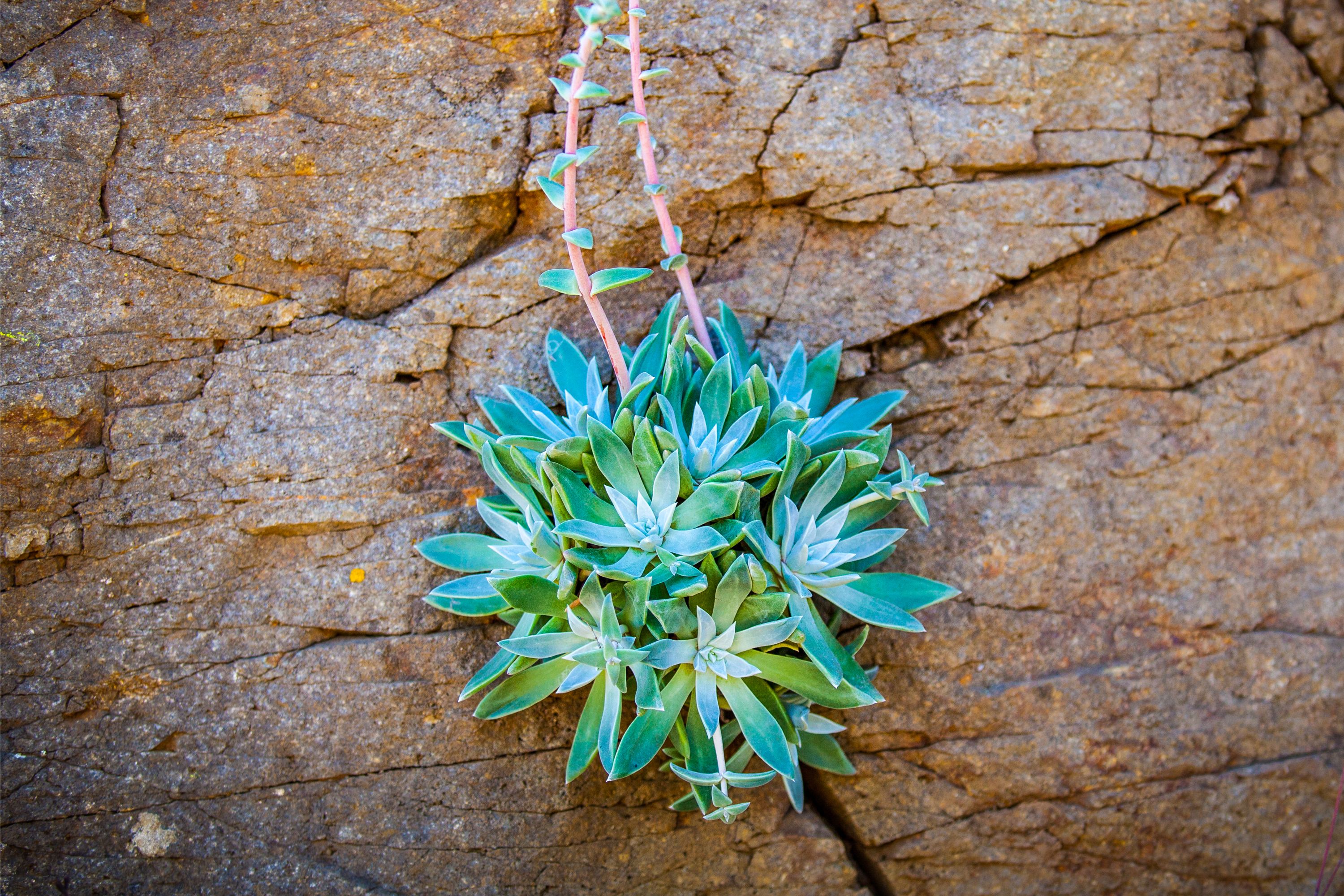Greene's liveforever
(Dudleya greenei)

Description
Dudleya greenei is a perennial species of succulent plant known by the common names Greene's liveforever, or Greene's dudleya. It is endemic to the Channel Islands of California, where it grows along the cliffs of four of the eight islands. It is a highly variable plant, presenting with multiple forms and varying levels of ploidy. Taxonomically, this species is an insular segregate of Dudleya caespitosa, and was placed as a stopgap taxon by Reid Moran in his 1951 thesis on the genus. It is characterized by white or green leaf rosettes, loomed over by inflorescences bearing pale yellow to white flowers. It is a member of the subgenus Dudleya, as it cannot be propagated from leaf cuttings, does not grow from a corm, and has tight petals. This species of Dudleya may or may not be caespitose; it can form clumps up to 1 meter wide. It may have anywhere from 1 to 100+ rosettes. Each rosette can range anywhere from 5 to 46 cm wide. The caudex is 2 to 5 cm wide, and may become elongated. Unlike the nearby D. candelabrum, the caudex is not swollen at the base. The leaves are evergreen, and are 3 to 22 cm long, 1 to 3.5 cm wide, and 4 to 8 mm thick. The leaf shape is variable. They may be covered in a white epicuticular wax, or present green. The base of the leaf is generally 1 to 3 cm wide, and may wound red or yellow when detached from the stem. The tip of the leaf is generally acute, while the margins of the leaves generally have 0 to 1 angles between the upper and lower leaf surfaces. The nascent inflorescence. The peduncle is 4.5 to 50 cm tall, and 3 to 5 mm wide. There are typically 3 first degree branches on the inflorescence, which may rebranch 0 to 2 more times. The terminal branches are 1 to 9 cm long, and hold 2 to 15 flowers. The bracts are 10 to 30 mm long, and 5 to 12 mm wide. The bracts are shaped lanceolate to oblong, and are more or less thick; they are also not bent backwards (reflexed). The pedicels are 1 to 5 mm long. The flower has sepals 1.5 to 5 mm long, shaped deltate. The petals are 8 to 12 mm long, 3 to 5 mm wide, and are connate (fused to form a tubular corolla) 1.5 to 2.5 mm. The petals are shaped elliptic, have an acute apex, and are pale yellow to more or less white (especially white on the margins). The pistils are connivent and erect. Flowering is from May to July.
Taxonomic tree:







